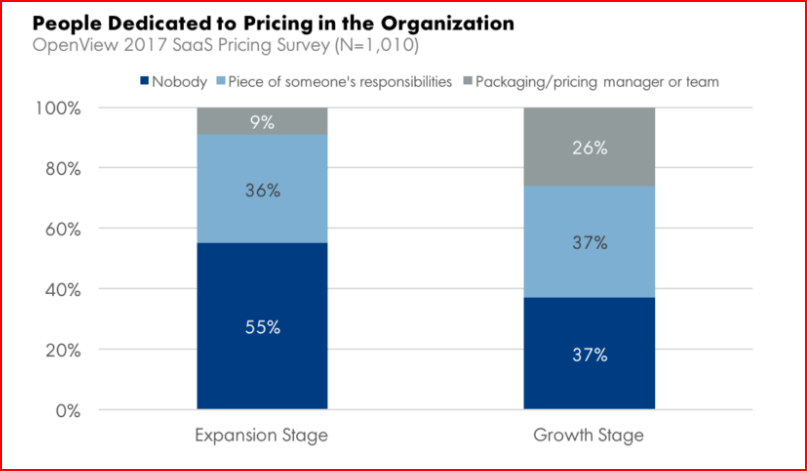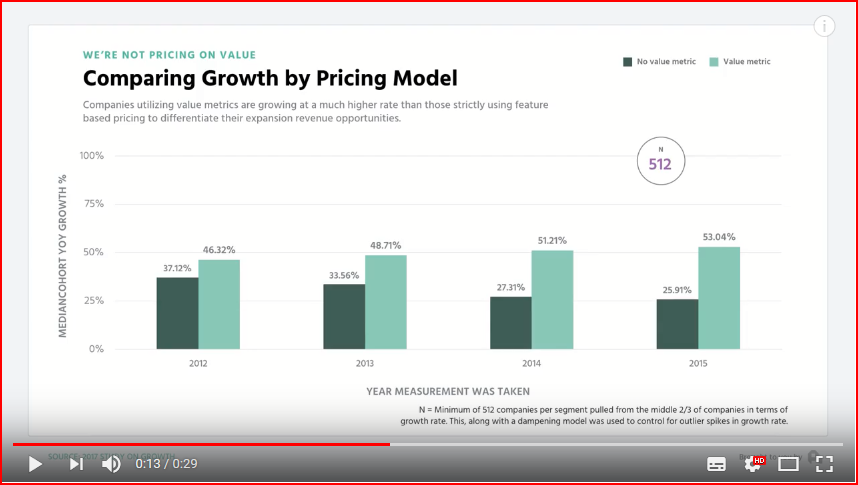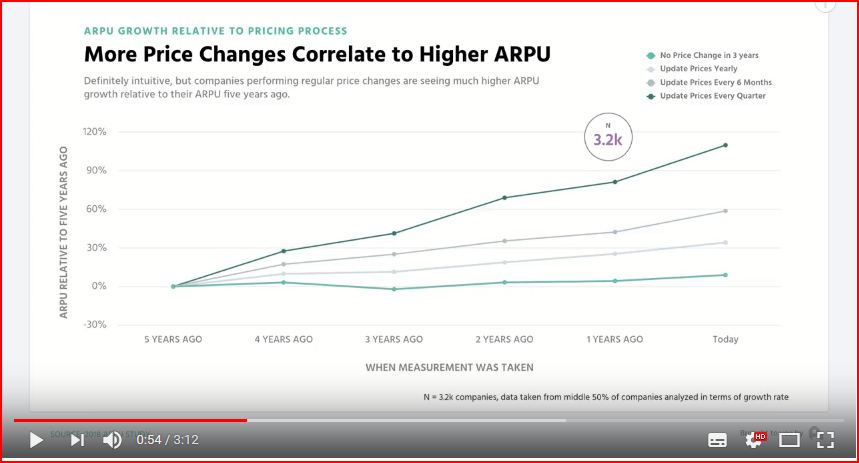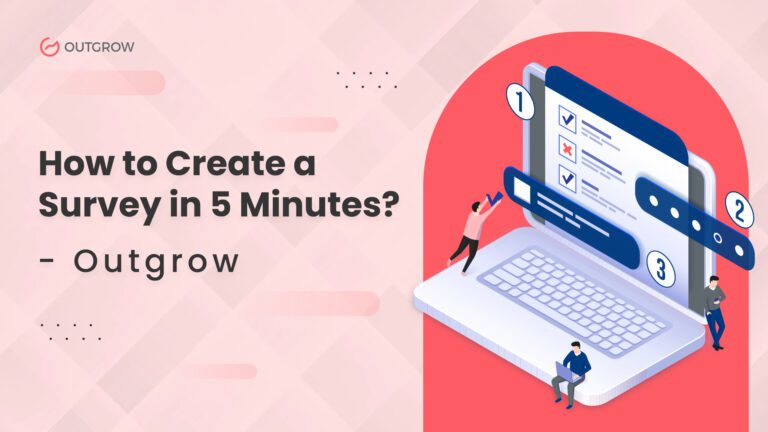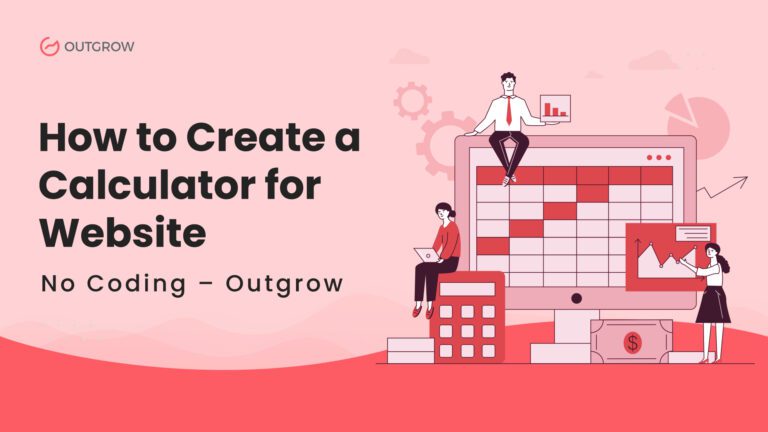Mastering the 4P’s of SaaS Marketing
Table of Contents
SaaS marketing is different from other forms of marketing because unlike others you’re selling an intangible product: a ‘software as a service’. However, ‘different’ doesn’t always mean ‘difficult’, as many make it seem. Yes, it can definitely be challenging, as your business is based on a recurring revenue basis, but who said you can’t learn the tricks of the trade?
To create a masterful strategy for your SaaS business, all you need is an in-depth understanding of the 4Ps of marketing or as we popularly call it, the Marketing Mix! The marketing mix talks about product, price, place and promotion. These four pillars of marketing are interconnected and a small change in one can impact the others for better or for worse! This is why we are going to talk about them in detail in this blog. We are sure that once you’re through with what these 4Ps can do for your SaaS marketing mix, you will be able to modify your approach and walk confidently towards success.
Now, without further delay, let’s get started!
1st P of SaaS Marketing: Product
Without a product that’s in demand and solves your prospects’ problems, you cannot enter the market. Apparently, a lot of start-ups fail because they are in a hurry to launch a product that is half-baked. Unfortunately, that’s not how it works. The “we sort of know what our target market is’ or “we’ll figure out once we launch the product” isn’t how big brands established themselves. You need to know your product and its takers inside out.
This brings us to the question of the actual way forward.
1. Create your buyer’s persona
Basically, a buyer’s persona is a semi-fictional profile that represents your ideal customer. Figure out what this person’s demographics, job title, job description, job title, etc. are.
2. Brainstorm and find out which feature aligns with what type of buyer
Come up with a product that solves all the major issues faced by this target customer. Also, factor in their expectations and needs. After this, come up with, what a layman calls, the ‘X’ factor in your product. Apparently, figuring it out is extremely important as this unique selling point of your product will be a huge differentiating factor for your brand. It will ensure that your target audience DOES NOT have an alternative to your product. What’s also worth keeping in mind is that you can’t be known for a lot of things. This is to say that you can’t be known for ‘best prices’, ‘best customer service’, and the ‘best return policy’ etc. Your USP has to be this ONE factor that sets you apart from your competitors. It’s the standalone reason why people should buy from you at all.
Voilà! You are product ready! You also know who it is for, what’s your USP and what problems it solves!
*Your business might be product-driven or customer-driven. Depending on what your approach is you can either create a persona first and think of the product later or vice versa. Either ways, you should be thorough in your research.
2nd P of SaaS Marketing: Price
If you get your product pricing right, you can delight your customers and open profit streams! Yet, despite it being such an important component, many SaaS businesses overlook it. According to a survey by OpenView, 55% of 1,000 SaaS executives who participated in the survey said that they have nobody in their company to price the product or handle pricing in general. Furthermore, 45% of the participants agreed that pricing tends to be “a small piece of someone’s responsibilities, rather than a dedicated focus area.”
This brings us to ask some important questions. Why is it when you know that pricing can actually shape your product or service’s perception and affect revenue, you just end up making a ‘random’ guess and ‘leave it’ to see ‘how it does’? As a matter of fact, what’s even worse is that only 14% of SaaS companies consider pricing before developing the product. Some even think of it at the last moment, before the launch! Can you beat that? Don’t you know it can be fatal for your business? Don’t you know that every month or year, your customers can decide to unsubscribe? This factor alone, if not anything else, should make you think critically about your pricing strategy.
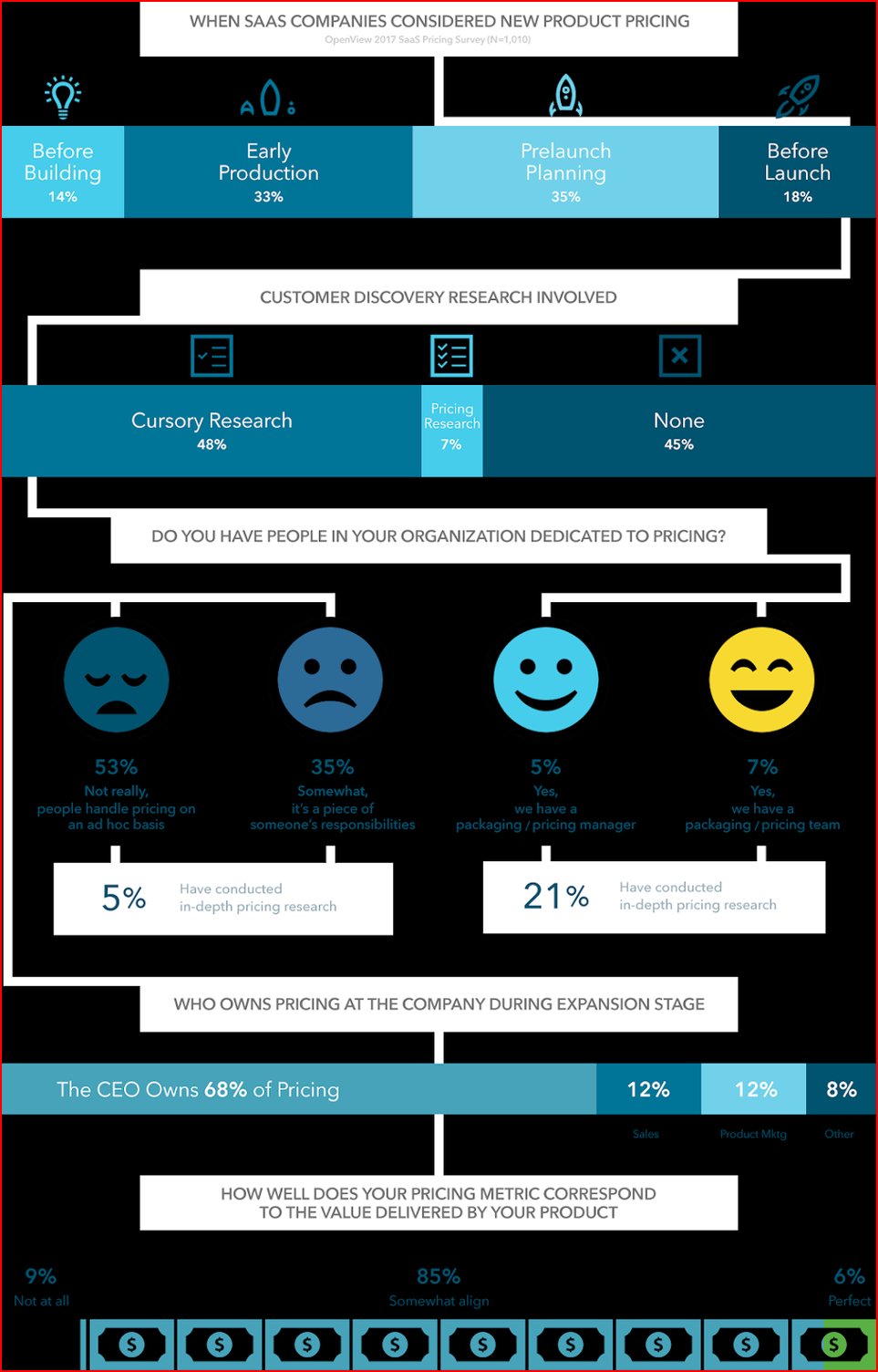
So, what do you do to engineer a profitable pricing structure for your SaaS startup ideas?
1. Map buyer’s persona to needs.
With respect to pricing, you should think about which feature of your product aligns with which persona. This is because you want to have a pricing plan for every type of buyer. To map persona to needs, you can create a survey. Perhaps, you make one on the Outgrow app? Just make sure that you’re asking questions that require the buyer to think hard to choose an answer. Their response is what will reflect their need, and it will be a huge help in the long run.
2. Come up with multiple pricing plans
Pick up the pricing page of any SaaS business, you will notice that most of them have multiple price options. This is because each plan is mapped to a particular type of buyer. Take Outgrow for instance. We have four different pricing options. In addition, towards the bottom of the price chart, we tell our prospects of two more plans about which they can enquire directly. This is to make their decision-making easier.
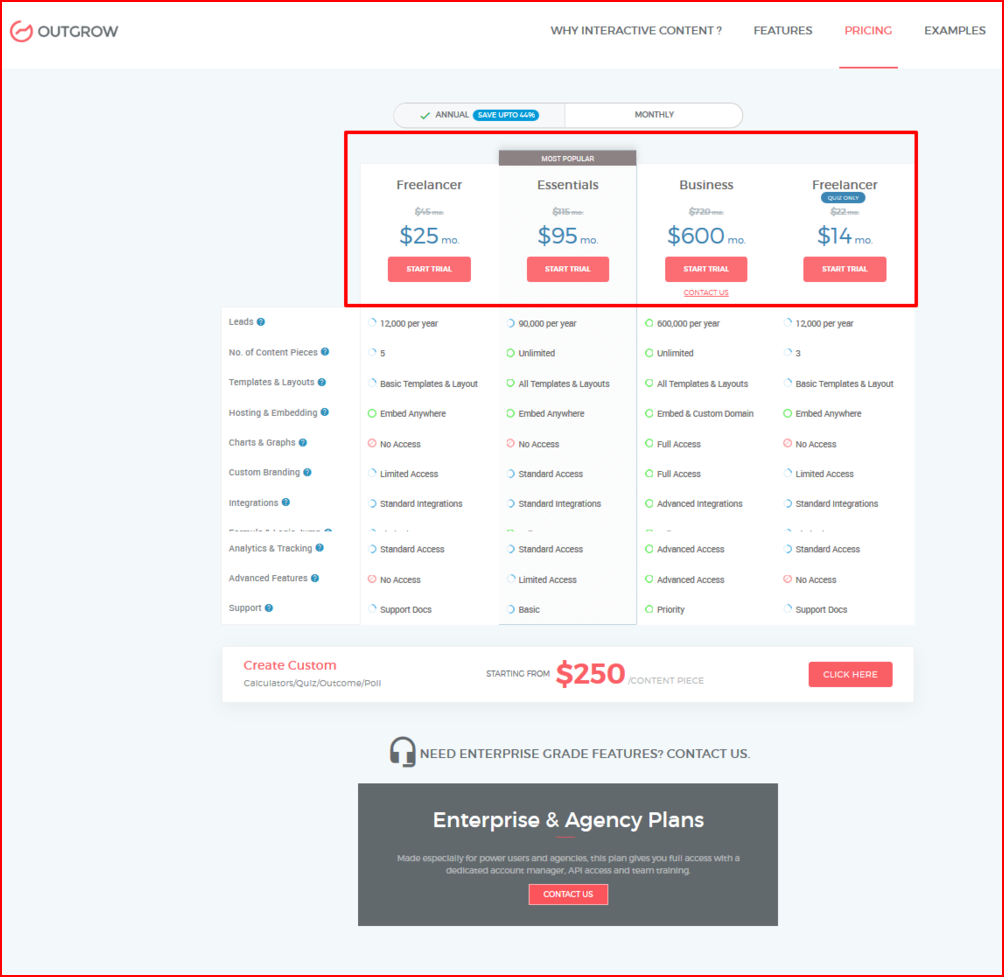
3. Identify your value metric
We will take a look at what Price Intelligently, who has an insane amount of experience helping SaaS businesses with pricing, have to say about it. As per them, “a value metric is essentially what and how you’re charging” For instance, it could be per-user or a number of videos hosted, templates used, etc. In fact, according to research conducted by them, companies who identify their value metric grow at “double the rate” than those who don’t. It certainly points out to the fact that having a value metric can boost your monthly recurring revenue.
However, do keep in mind the ‘perceived’ value of your product. You don’t want it to be priced too high or too low that the prospect’s question if the product is THAT good or THAT bad to be priced so. This is why it helps to align features with buyer persona (those they ascribe a high or low value to) and then come up with what you want to charge them.
4. Change your subscription pricing after a couple of months
You’re thinking – “But I only just figured out the pricing plan!”, right? A round of applause for that but as technology evolves so should your product and its price. A better, improved product means more value delivered to customers. So, it only makes sense to bring in pricing plan changes.
On the whole, we’d say, make a pricing structure that enables people to choose and not confuse. If they experience decision fatigue or can’t understand the pricing plan, there is no way you can convince them to buy from you. Besides, do keep a track of competitor’s pricing plans though it shouldn’t completely impact your strategy. It’s just to keep track of how your industry is moving forward.
Related Read: B2B SaaS Pricing Pages in 2017: Lessons From 100+ Top Businesses
3rd P of SaaS Marketing: Place
With your first two Ps sorted it’s time to ‘place’ your product right where your target audience is. This means being present where people are actively looking for you. That is, consciously determining your distribution channels. By the way, no marks for guessing where you should be ‘seen’! On the internet! If you are easily discoverable, then more people will come to know about you. You can achieve this feat through SEO.
As all of us already know, SEO comprises of two categories: on-page and off-page. To make sure your brand is discoverable you must work on both. If you get the formula right then you will rank well in search engines and thus will be more visible to people who are looking for YOU! At this point, however, we must also say that SEO isn’t only about keywords, submissions or getting backlinks, etc. There’s a whole different bunch of strategies you can use. For instance, this Digital Current blog has five SEO experts sharing how SaaS businesses can shoot-up rankings and eventually be found. In fact, here’s another one by Search Engine Land which should give you some perspective on how to go about optimizing your SaaS marketing.
We’d say, go full throttle and master search engine optimization. With time, you will see more people turning to you for solutions to their problems. Once you have their attention, engage and eventually convert them into your customers! As a matter of fact, when we talk about engagement, nothing beats interactive content for SaaS marketing. Perhaps, you should give it a shot too?
Pro Tip: 9 Calculators Every SaaS Company Should Really Consider
4th P of SaaS Marketing: Promotion
All businesses turn to content marketing to get the word out about their company and so should you. The ultimate aim is to build your reputation as a thought leader. You can do so by writing blogs, ebooks, whitepapers, or hosting webinars and podcasts that address the problems of your prospects. Apparently, all of these would work in tandem to gain traction and earn your prospect’s trust.
Moz, HubSpot, Buffer, and other SaaS companies already have developed a robust reputation through authoritative blogs, guides, etc. If you see, their content leads their target audience to their product. It’s as if they walk them into their sales funnel and eventually turn them into customers.
But it it imperative to point out here that that marketing communication is as much about the content as it is about the channels. Consider promoting your blogs on social media platforms like Twitter, Facebook, Linkedin, Instagram, Tik Tok, Pinterest, YouTube, oh we can go on and on!
Additionally, you can look towards fresh platforms to grow your audience, these can be Product Hunt, BetaPage, and similar community-driven platforms that act as wonderful feedback and lead generation sources.
Sample the screenshot of one of the blogs by HubSpot. Right below the name of the author, they plug in a free video starter pack.
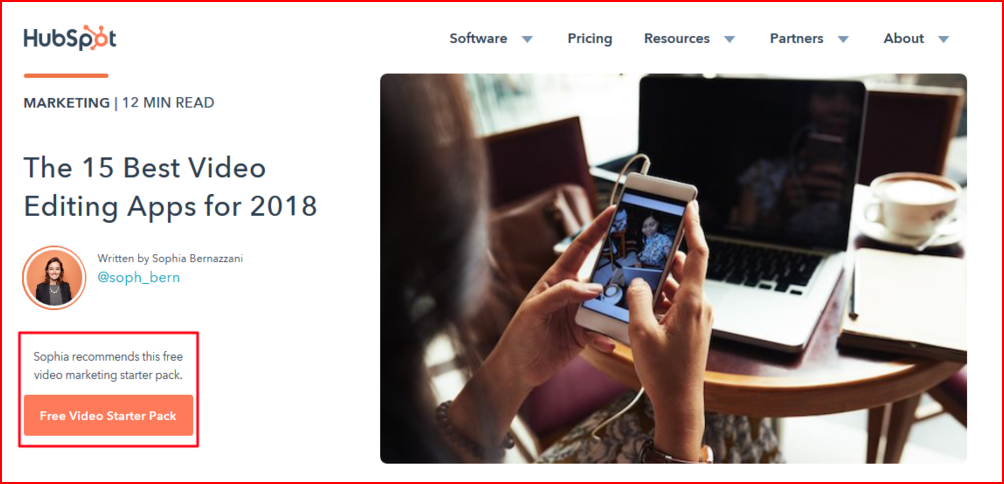
In fact, you could also give your prospects a ‘free trial’ option, but make sure you get them to purchase it later.
Unfortunately, only 26% of SaaS companies use email marketing to activate free trial users! If you’re among the rest of them, you know what to do. This blog by Unbounce can help you get started. The next step to really get them to convert vis-a-vis promoting your product is by sending them a reminder when their trial period is coming to an end. You could also offer to extend their free trial period to make them more used to your product.
Related Read: SaaS Free Trial Conversion Rate Benchmarks
Another effective way of acing your SaaS product promotion is by being on the B2B review sites. This is because we know, for a fact, that no one buys a product without reading reviews.
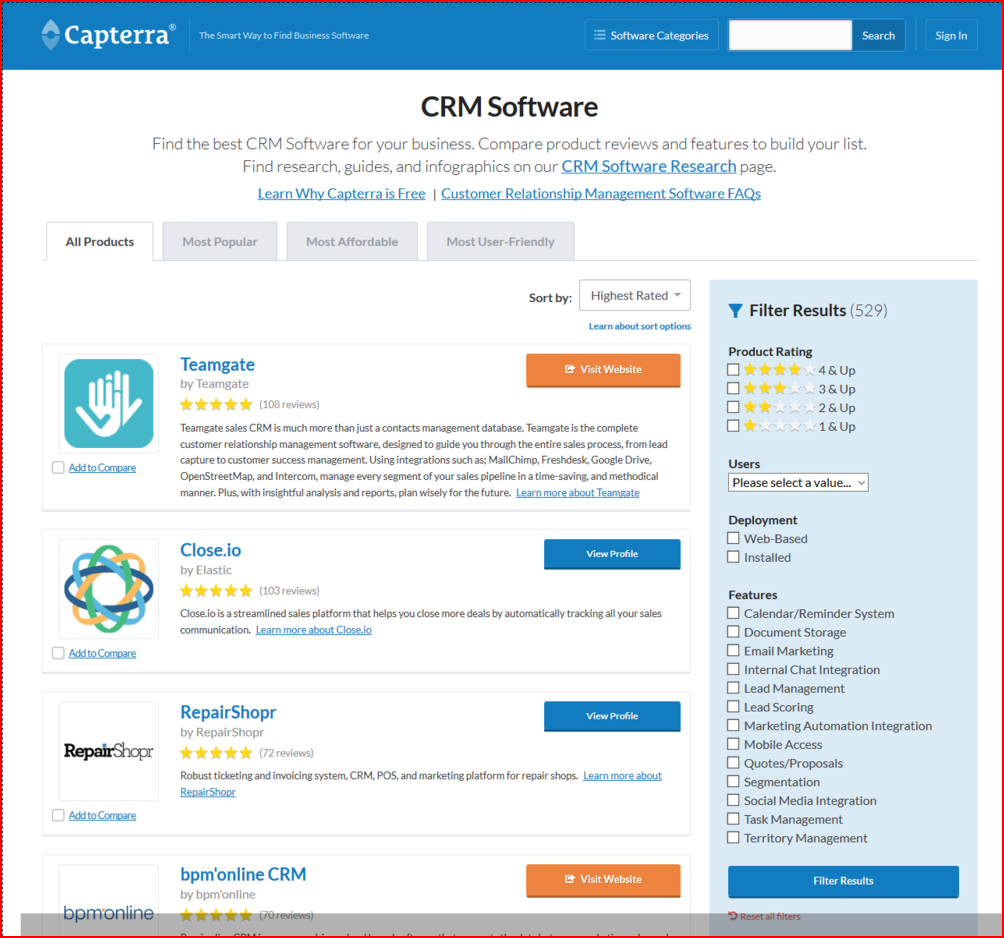
These product reviews written exclusively by your ‘real’ customers are excellent pieces of promotional content. Hence, they have the power to influence your target audience. Although, beware that while some customers will speak in your favor, while you will always have a bunch of unhappy customers who will lash out against you. Instead of ignoring them or dueling with them, acknowledge and get to the bottom of the problems they are facing. Who knows they might bring to light a new perspective which can make your product better. And, even if not, you would be able to show people that you take criticism in your stride.
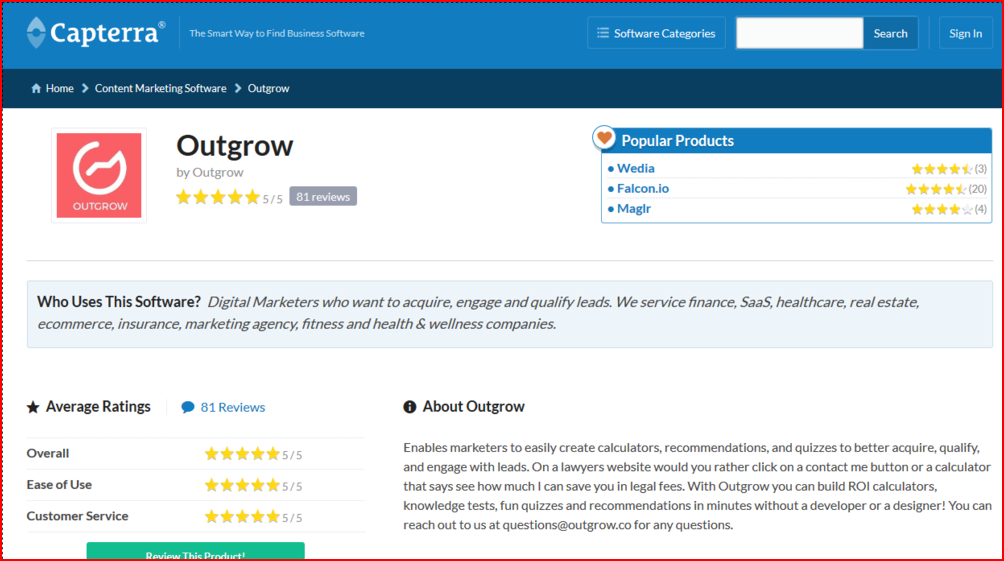
So, folks, that was all from our end on how you can master the 4Ps of marketing for your SaaS business. However, we wouldn’t sign off just as yet. We have one more thing to highlight as it has a direct impact on customer retention i.e. customer services. Even if you’ve built a superior quality product but if your end-user support is weak then you will find people eventually canceling their subscription. And, that is going to hurt you the most because you’d worked hard to acquire these customers only to lose them to poor customer support!
To sum up, if you want to scale up and stay in the business you must do all that it takes to keep the 4Ps from crumbling. At the same time, be open to experimenting and making mistakes. By and large, make sure you learn from your failures.
Holy Molly! Our time’s up and we’d now pass the baton to you! We would love to hear about your experiences running a SaaS business. How has your journey been so far? Any roadblocks in particular that you would like to talk about? Perhaps, what you did differently worked out for you? We’re all ears.


